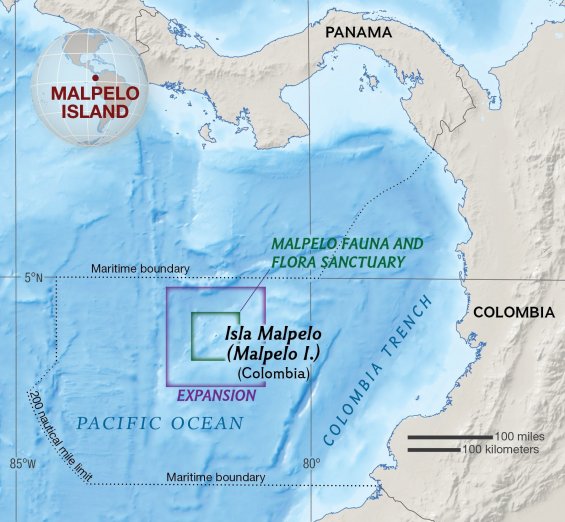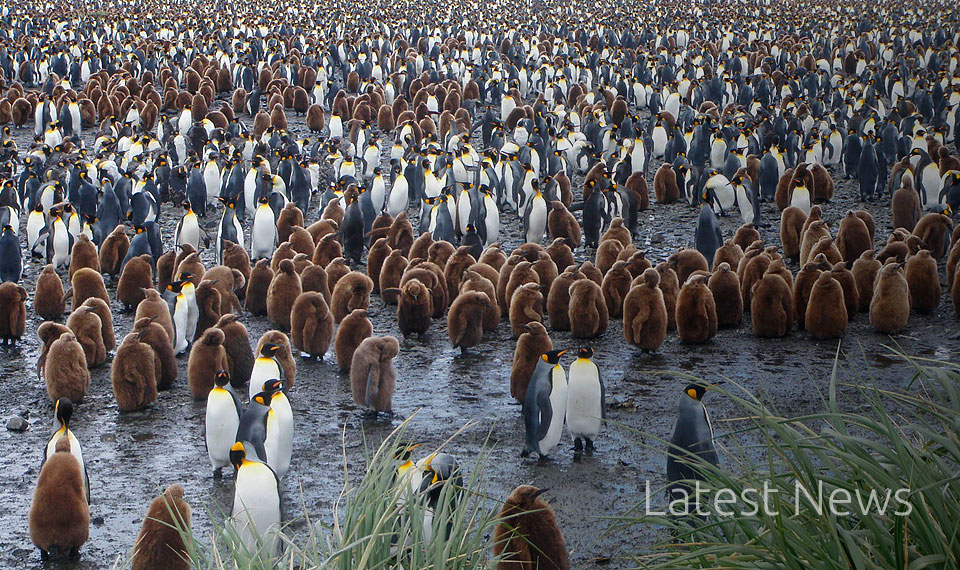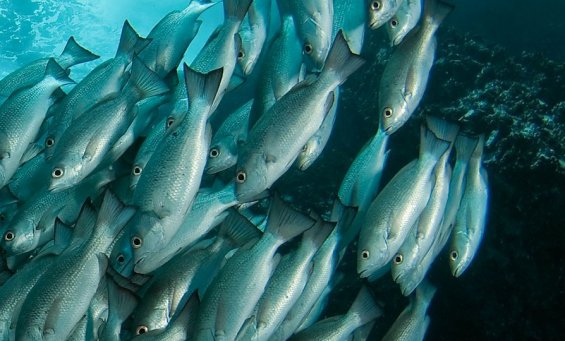The remote island of Malpelo is recognized as one of the best diving sites in the world, characterized as much by its steep walls and underwater caves as its richness of marine species. Located about 500 kilometers off the country’s Pacific coast, the island was protected by Colombia as the Malpelo Fauna and Flora Sanctuary, and is also a UNESCO World Heritage site. Encircling its rocky shoreline are nutrient-rich waters at the confluence of multiple oceanic currents. These waters, with the island’s complex terrain, provide ideal conditions for Malpelo’s outstanding biodiversity, including nearly 400 fish species and 340 species of mollusk.
Due to its remoteness and protected status, Malpelo harbors rich and intact marine ecosystems: hammerheads, silky sharks, whale sharks, and tuna are among the species that can be seen here in large aggregations.
The Mission
Partnering with Fundación Malpelo and the National Parks of Colombia, the Pristine Seas team is currently carrying out an expedition to the Malpelo Fauna and Flora Sanctuary.
Their goal: to study the intact - and critically important - marine environments in this area, which form part of the tropical Eastern Pacific marine corridor. Stretching north to the Revillagigedo Islands, and south to the Galápagos Islands, this corridor may be used by migratory fish to move between feeding and breeding grounds.

Working with leading marine scientists from Colombia and across the globe, expedition members will tag sharks to capture data on long-range migration, use remote underwater video and open-water cameras to record pelagic species, and measure the abundance of reef fishes and sharks. The team is also surveying the ocean depths through the use of deep-water drop cameras which can capture life at depths of over 2,000 meters - and by submersible.

